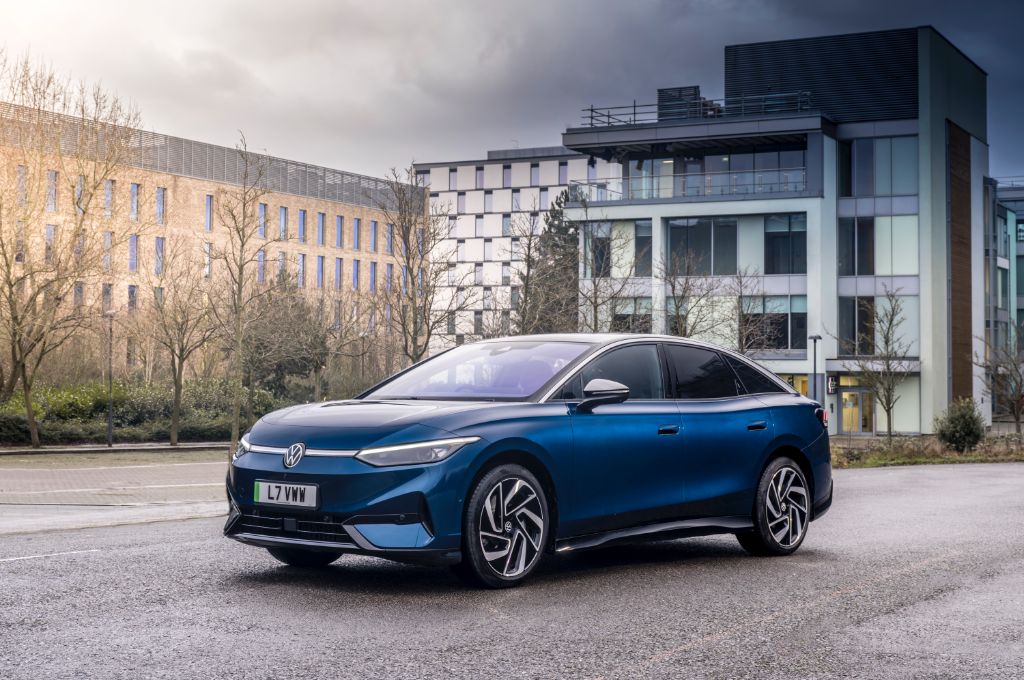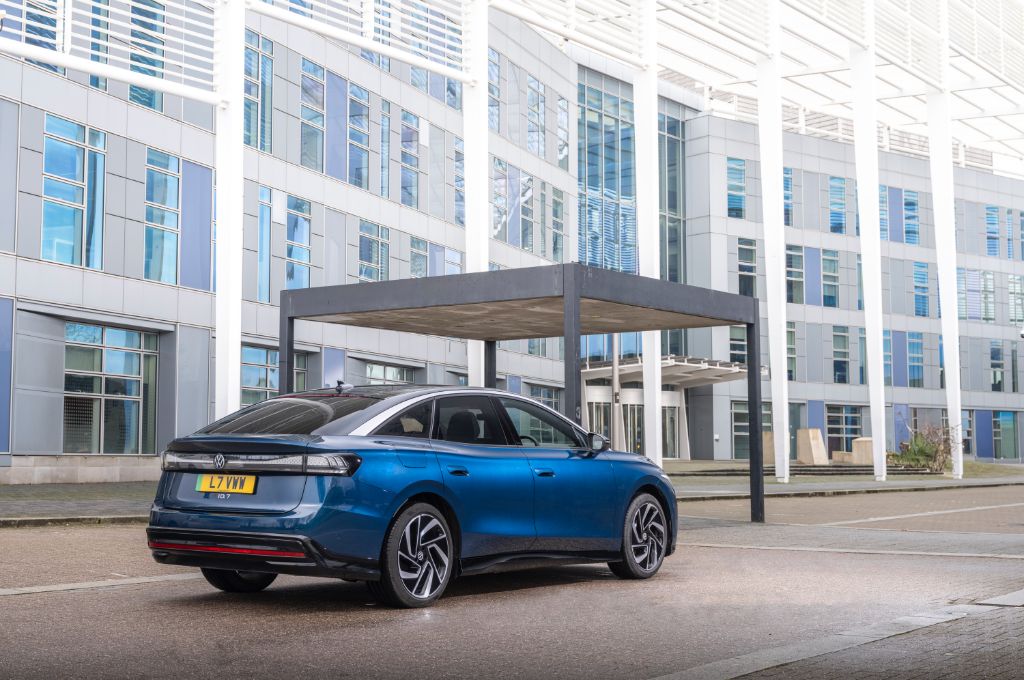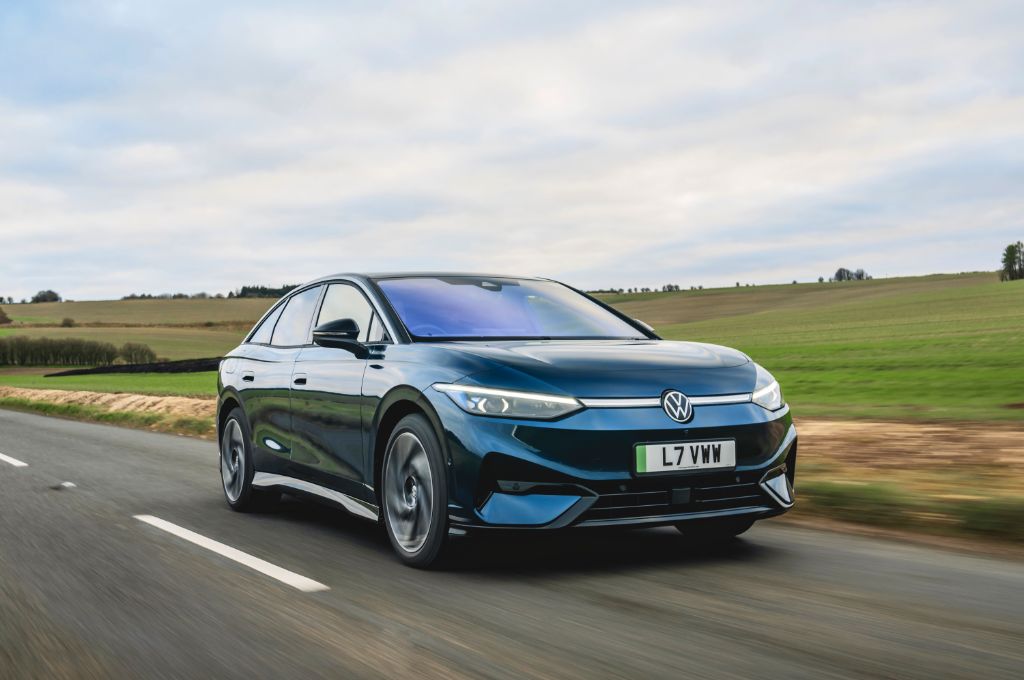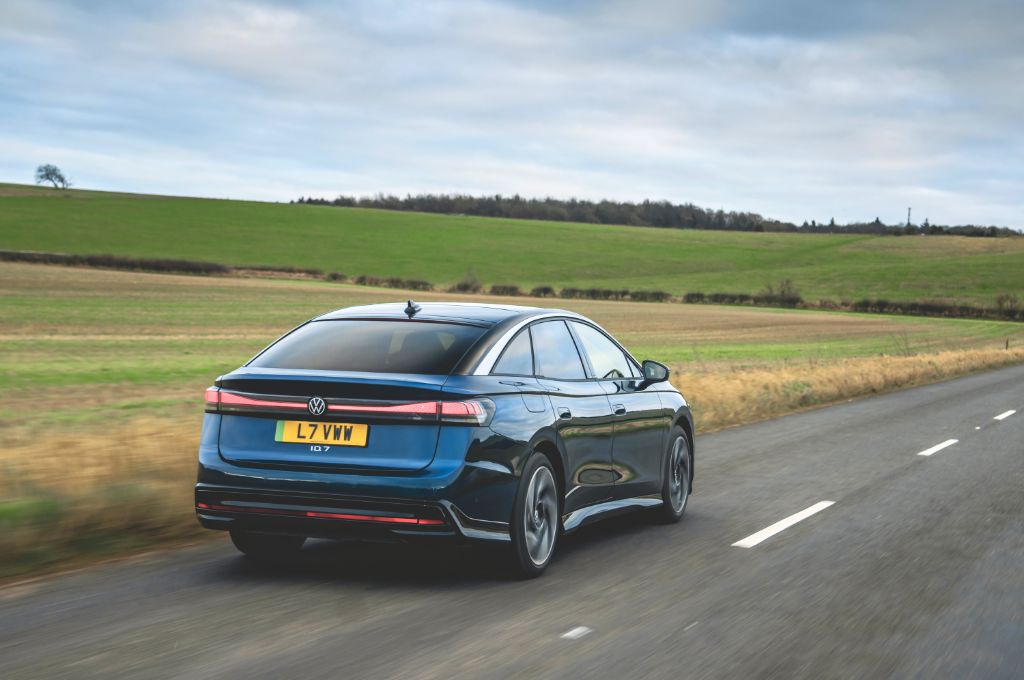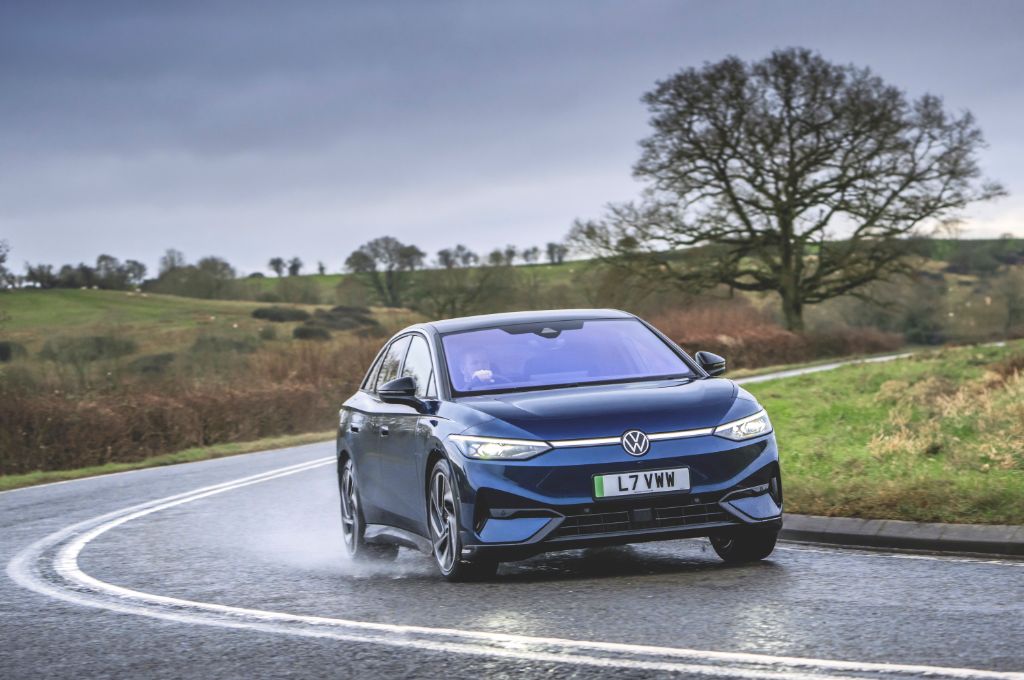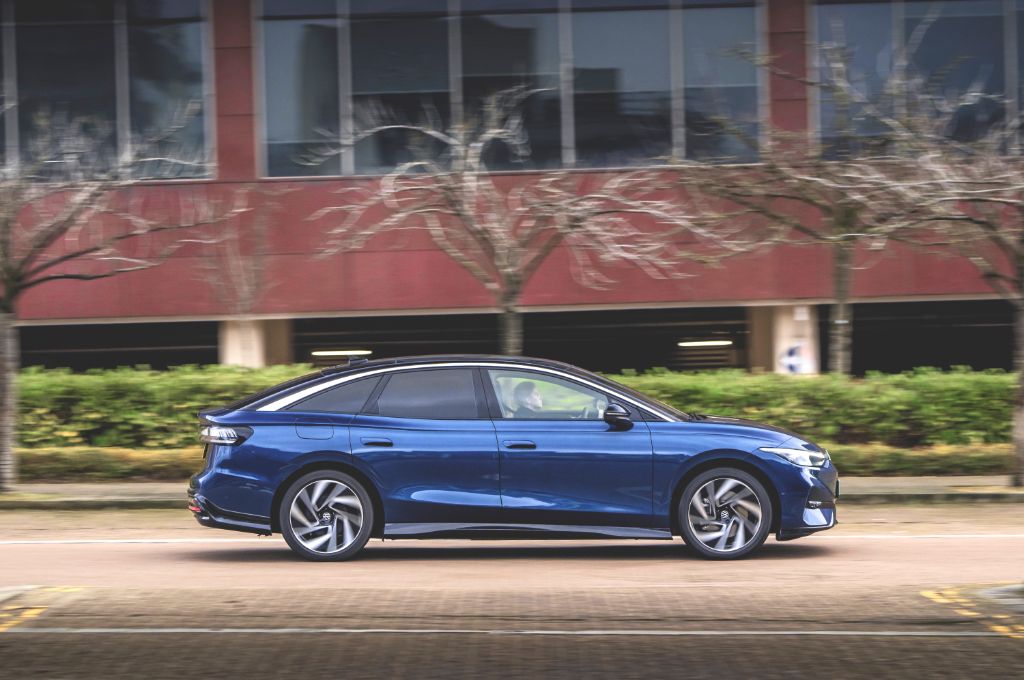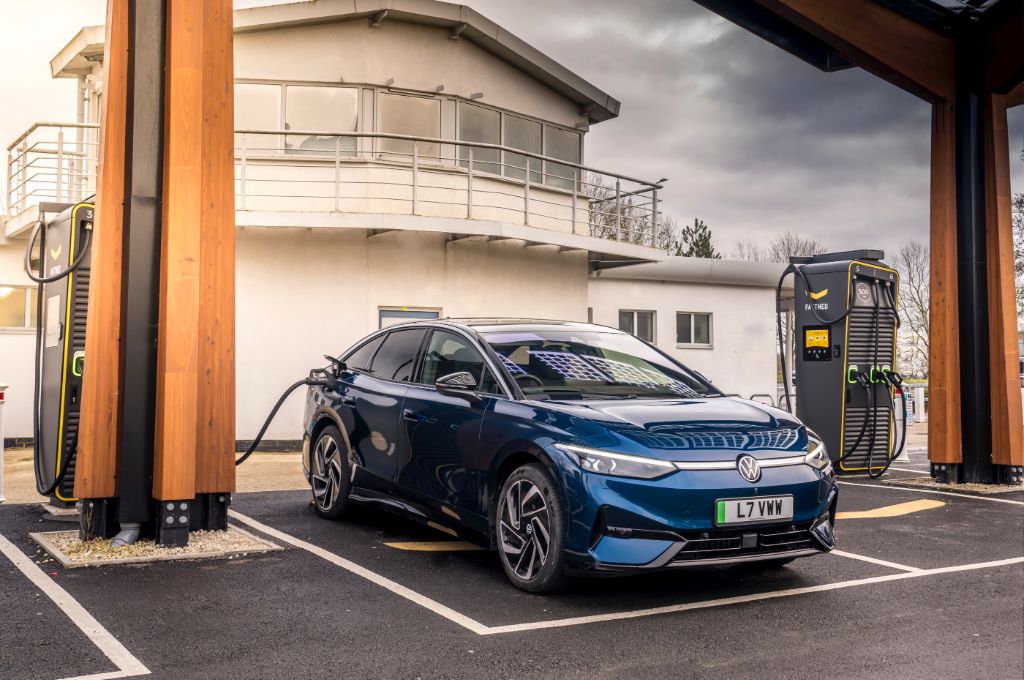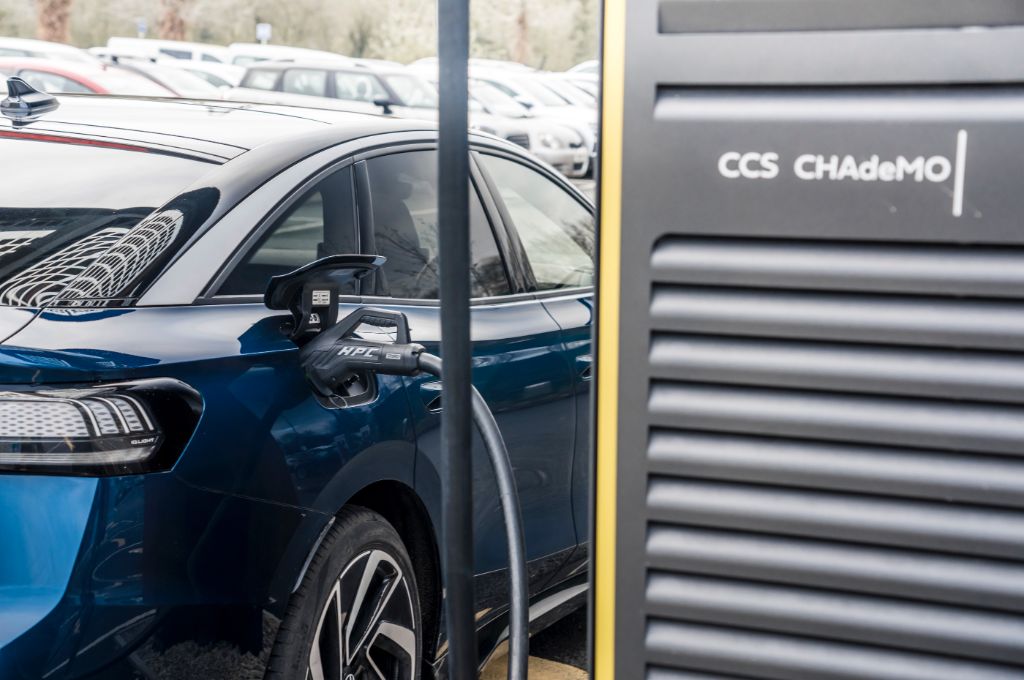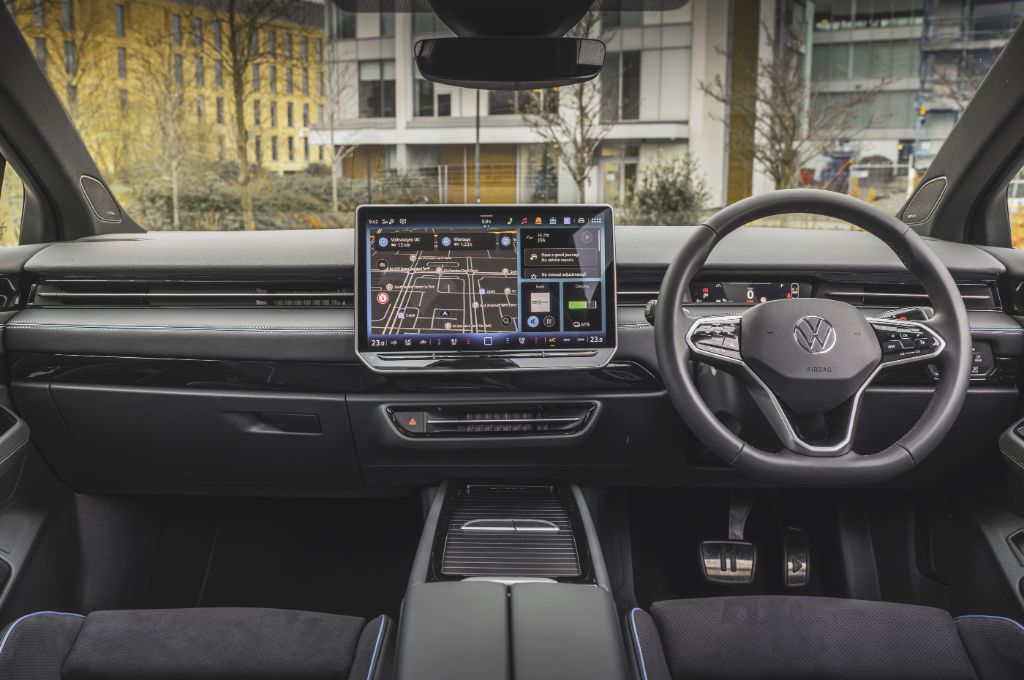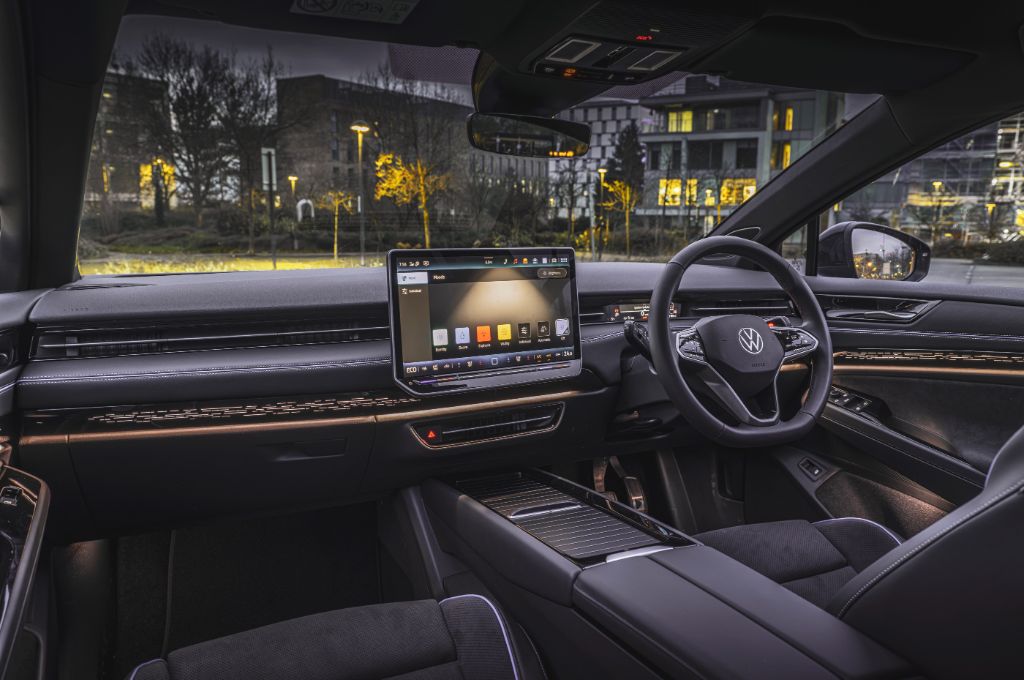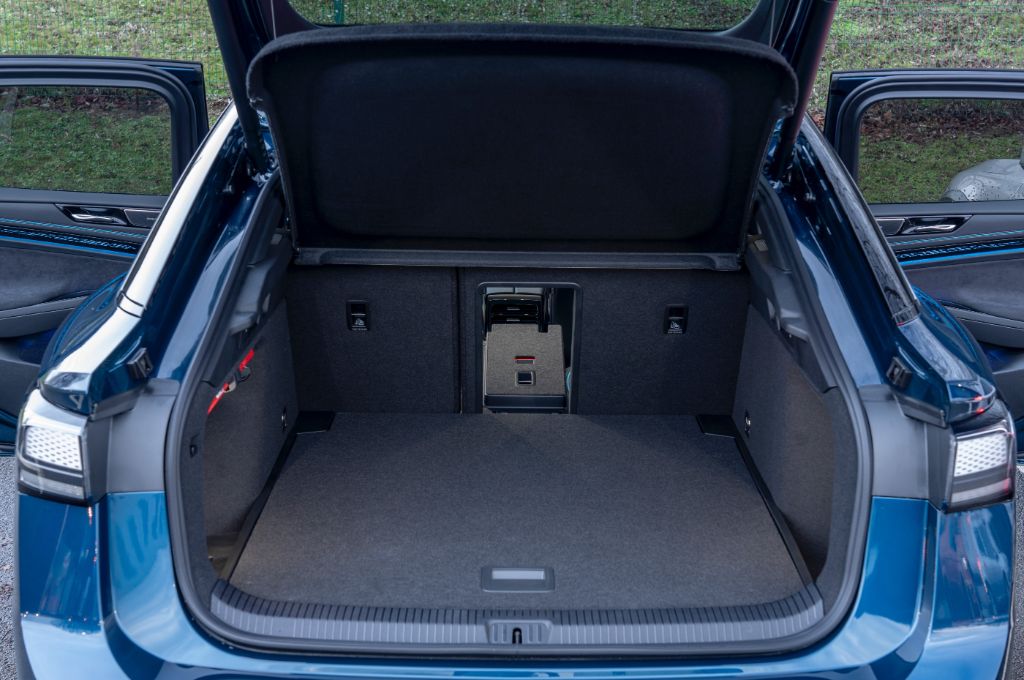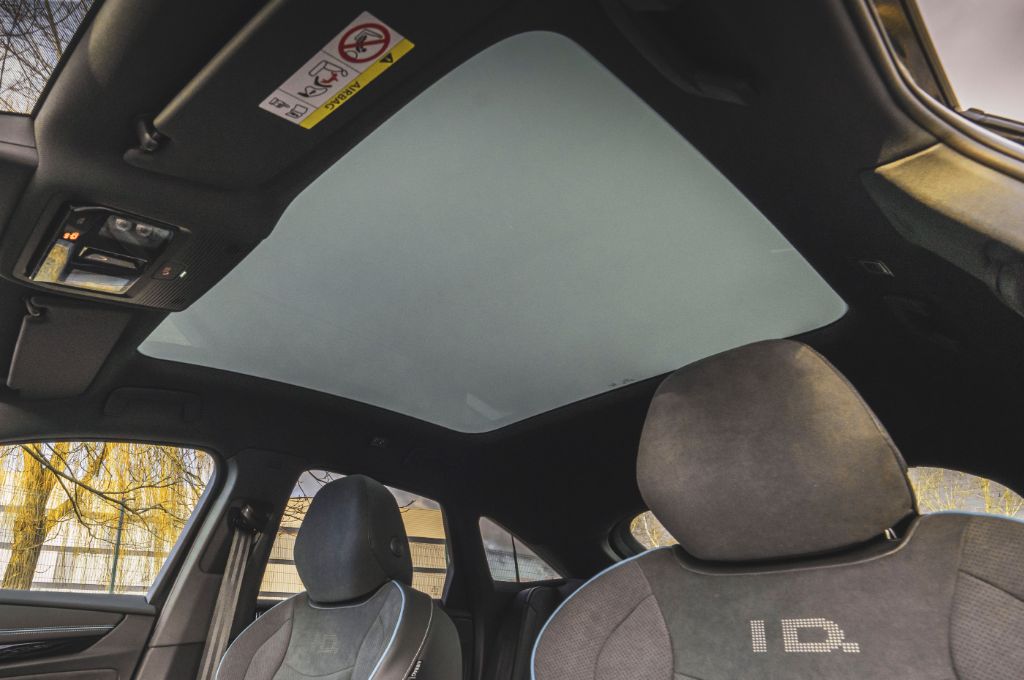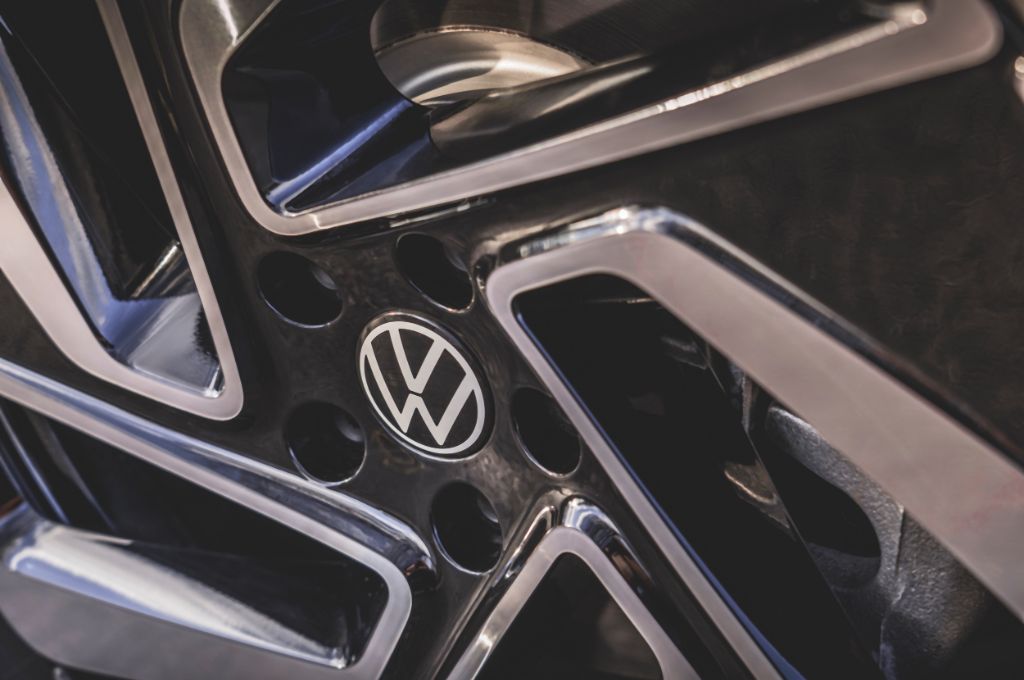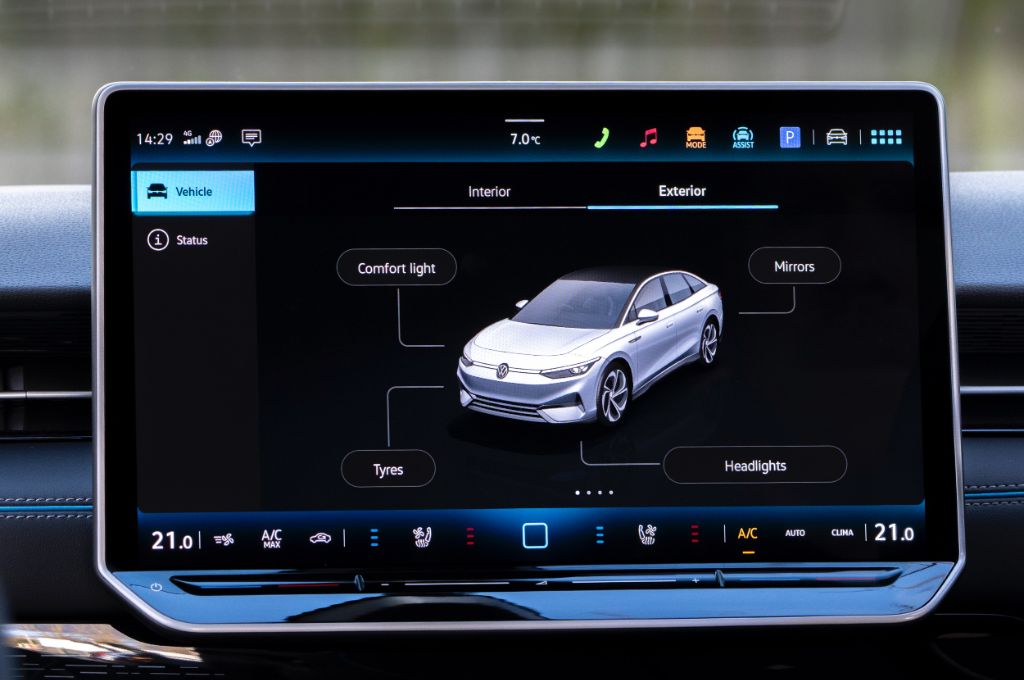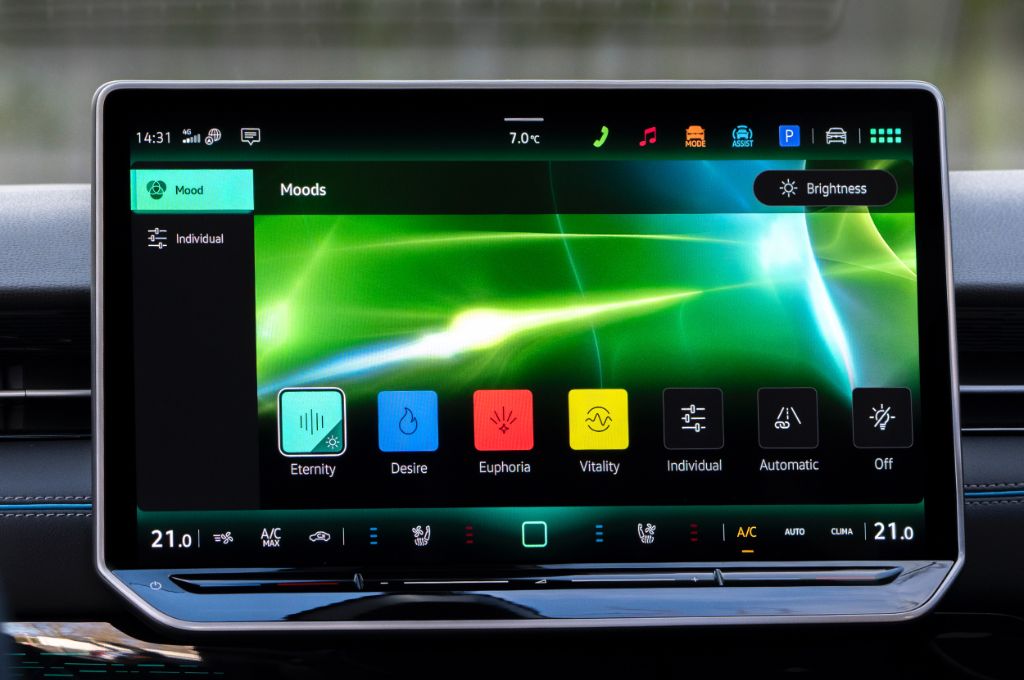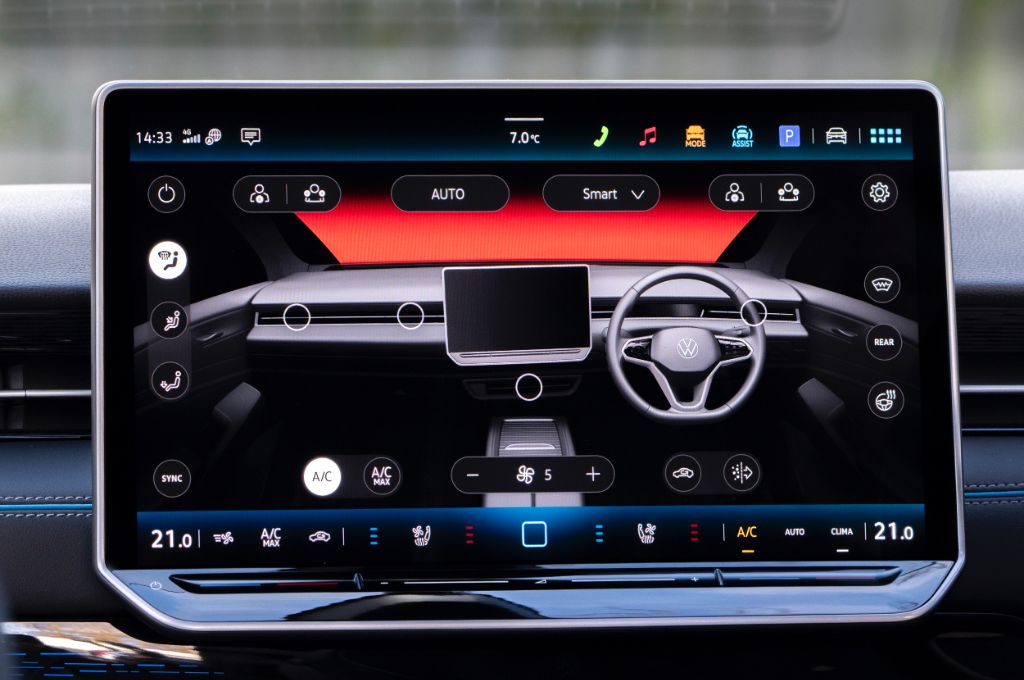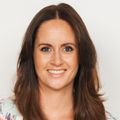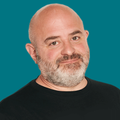The ID.7 comes with two battery size options: the familiar 77kWh pack that appears across the existing range, and a new 86kWh pack that so far has only been offered in the ID.Buzz long-wheelbase. The smaller pack was available from launch in 2023 with the larger one joining the line-up in mid-2024. In terms of charging, the 77kWh pack peaks at 170kW on a DC charger, while the 86kWh pack can accept a charge speed of up to 200kW. Expect 10-80% charge times of around 25-35 minutes on a suitable DC charger.
As for range, the entry level VW ID.7 has a WLTP figure of 383 miles, while the bigger battery model come with a 436-mile WLTP figure making it one of the longest range electric cars on the market, together with rivals like the Mercedes EQE and the (much smaller) Tesla Model 3.
The ID.7 comes with a brand new 282bhp electric motor powering the rear wheels that’s claimed to be more efficient. In our tests we didn’t find that to be the case, averaging only 3.2 miles per kWh, but the new motor delivers sharp acceleration and a helpful wadge of overtaking torque when needed; a range-topping sporty GTX model gets an extra motor on the front axle and gets 335bhp and four-wheel drive. The ID.7 feels incredibly composed with a pliant ride quality and direct steering – the GTX has a stiffer ride and more tactile steering, but is still a comfortable car to be in.
Inside, the ID.7 marks an even bigger departure from the minimalist cabins first seen on the ID.3 and ID.4. Volkswagen has worked hard to ramp up the luxury and in doing so has created a cabin that feels genuinely special. There are high quality materials throughout with contrast-stitched leather trim, soft plastics and metal strips delivering a genuinely premium feel. The infotainment system is also much improved as it runs the fourth generation of Volkswagen’s software – it’s quick, intuitive and the sliders to control the volume and temperature are now backlit. At last. The interior is also very spacious, despite the car’s sloping roof-line, and there’s a large 532-litre boot which expands to 1,586 litres. There’s also a Tourer version with even more space in the back and is one of an increasing number of electric estate cars to hit the UK market.
Verdict
Comfortable, beautifully made and refined, the ID.7 feels like the first ID product that truly embraces the qualities buyers have come to expect from the brand. It feels like Volkswagen doing what Volkswagen does best – something the first ID.3 didn’t. The elements of ID that needed fixing – primarily the infotainment system – have been overhauled, while the new motor and improved suspension give the ID.7 a genuinely luxurious feel. Our only quibble is the efficiency, which seems a long way off the official figures. The bigger battery model seems more promising but we’ll reserve judgement until we can get a longer, more representative run in the car.











